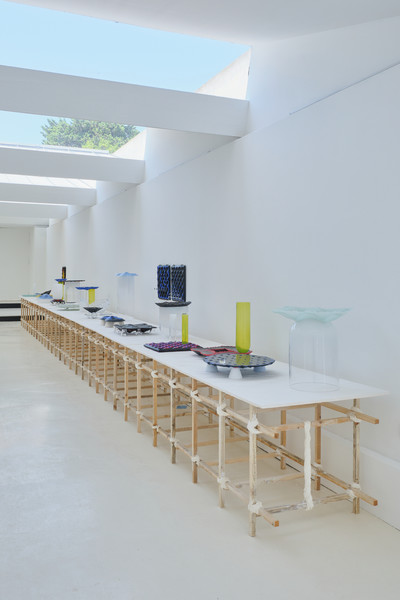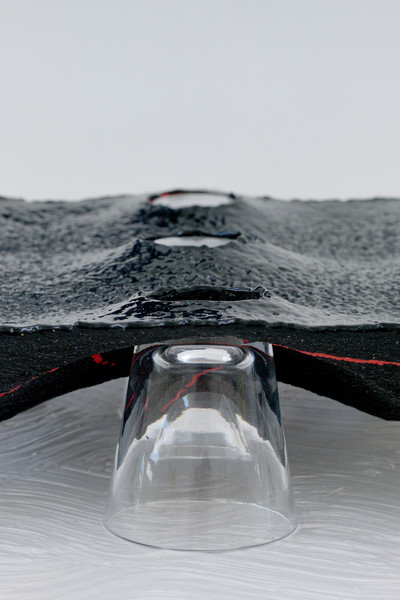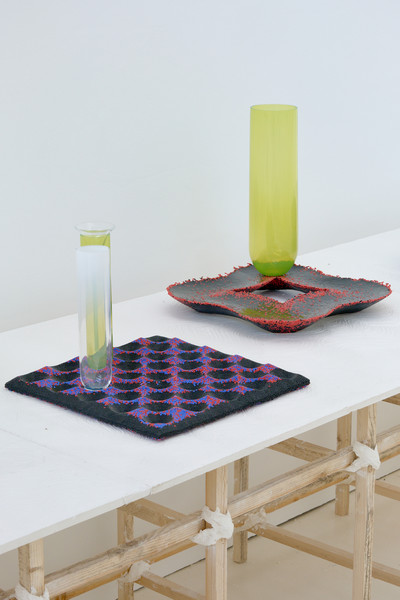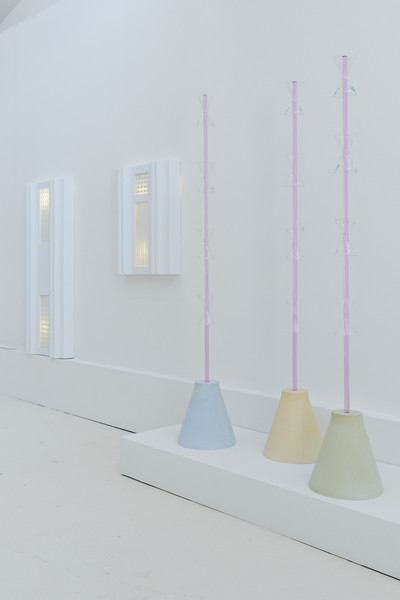Sacha Parent & Valentine Tiraboschi, Grand Prize Design Parade 2024, “Granular Mechanics”
Applied research carried out at the Cirva and the Manufacture de Sèvres, exploring techniques for shaping glass and porcelain through the prism of grain.
Revealed in 2024 by the Grand Prix Design Parade Hyères, Valentine Tiraboschi and Sacha Parent are a duo of designers, both graduates of ENSCI - Les Ateliers, and Valentine also trained as a plasterer with the Compagnons du Tour de France. Drawing on their complementary skills and experience of the material, they have defined a design and production method that we could discover last year with their ornamental project “Le décor par le sable”.
Since autumn 2024, they have been extending their field of research thanks to artist residencies hosted by the Manufacture de Sèvres and the Cirva in Marseille. From two exceptional workshops, from the same design protocol applied to the materials at their disposal, they have generated two occurrences presented in mirror in the exhibition.
With the support of the craftspeople from the Manufacture and the Cirva, we devised material-driven drawing processes that allow us to directly compose volumes in porcelain or glass. We restricted our research and creation protocol to a tiny particle of the material: the grain.
- In Sèvres, we searched for an alternative manufacturing method to the traditional production of porcelain cast in a plaster mould. We started from the main component of slip, kaolin, which is ground and crushed at the Manufacture. In the laboratory, we developed a recipe for exploiting this deposit of semi-processed material in granular form. We then carried out various tests to shape these kaolin grains once they had solidified through firing.
As we challenge the traditional process of the Manufacture’s production chain, we explore a new formal and technical option that allows us to reuse the kaolin from decommissioned pieces and skip many stages in the manufacturing process.
The final object is a porcelain stained-glass window, a contemporary take on lithophane, one of the Manufacture’s heritage crafts. We designed frames to compartmentalise and guide the flow of kaolin grains, creating variations in density that filter the light and reveal the pattern. This composition is a tribute to the architectural ceramics produced in Sèvres in the past, and presented in a pavilion at the 1925 Decorative Arts exhibition. -
In Marseille, we had to understand the glass production system to identify granular resources as a starting point for our protocol. The glass grain passes through various scales, from silica powder to pearl, before becoming a bubble that craftspeople deform at will.
We drew on the Cirva’s dormant stock from their collaboration with Gaetano Pesce (1987, 1996 and 2000-2006). This Italian designer had used sandblasted silica, which naturally fitted with our flow technique. The result is a series of shells with faces treated in two finishes (sandblasted and vitrified). We also reused the glass beads that Pesce had used as fillers for his thermoformed pieces. With patience, we assembled them into necklaces and built them up to form openwork bowls and baskets. Lastly, we repurposed thermosetting beads to form mounds that were fixed in place through firing. The glassmakers, for their part, created spiral volumes that echo hot-woven basketry.
Following these experiments, the development of crockery, bowls, and vases illustrates the decorative possibilities offered by the different scales of “grain”. The grains, or spheres, come together to form volumes and patterns. -
These two exceptional residencies gave us the opportunity to produce a series of artefacts that collectively question our notions of vocabulary, ornamentation, and contemporary aesthetics. The CIRVA and the Manufacture de Sèvres are two research centres that we could approach by “doing,” and that allowed us to develop and hybridise innovative manufacturing processes.





